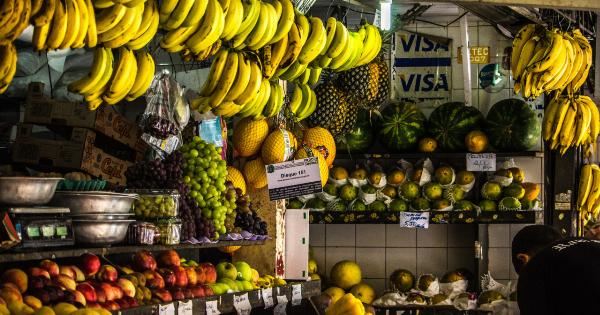Instant coffee, also known as soluble coffee, is a popular beverage around the world. It has become an essential part of our morning routine, providing us with a quick and convenient way to enjoy our favorite brew.
But have you ever wondered about the origins of instant coffee?.
The concept of instant coffee dates back to the late 18th century. In 1771, an Englishman named David Strang invented a method to produce instant coffee. However, it wasn’t until the 20th century that instant coffee gained widespread popularity.
The Invention of Freeze-Dried Coffee
The real breakthrough in instant coffee technology came in 1938 when a Swiss engineer named Max Morgenthaler perfected the process of freeze-drying coffee.
Freeze-drying involves freezing the brewed coffee and then removing its water content through sublimation – a process where ice converts directly to water vapor without going through the liquid state. This method preserved the coffee’s flavor and aroma, making it taste similar to freshly brewed coffee.
Morgenthaler’s invention was a game-changer for the coffee industry, as it allowed for the mass production of instant coffee with a longer shelf life. This development made instant coffee a convenient choice for households around the world.
The Rise in Popularity
Instant coffee gained significant popularity during World War II when it became a staple for soldiers. Its light weight and easy preparation made it an ideal beverage for troops on the move.
The demand for instant coffee grew exponentially, leading to advancements in its production and packaging.
After the war, instant coffee continued its rise in popularity. Companies like Nescafé and Folgers became household names, bringing instant coffee to the forefront of the beverage industry.
With the convenience it offered, instant coffee became a go-to choice for people who wanted a quick caffeine fix.
The Process of Making Instant Coffee
Today, the process of making instant coffee involves several steps:.
1. Roasting and Grinding
The journey of instant coffee begins with the roasting and grinding of coffee beans. Arabica and Robusta coffee beans are the most commonly used varieties.
2. Brewing
The ground coffee is then brewed into a concentrated liquid, usually through methods like percolation or infusion.
3. Freezing
Next, the brewed coffee is rapidly frozen to temperatures below -40°C, converting it into a solid.
4. Drying
The frozen coffee is placed under a vacuum, and the frozen water is vaporized through sublimation. This leaves behind only the pure coffee solids.
5. Granulation
The dried coffee solids are then crushed into granules or fine powder, depending on the desired texture for consumption.
6. Packaging
The final step involves packaging the instant coffee granules or powder in airtight containers to preserve freshness.
The Advantages of Instant Coffee
Instant coffee offers several advantages that contribute to its widespread popularity:.
1. Convenience
Instant coffee is incredibly convenient, allowing you to prepare a cup of coffee quickly with just hot water. It eliminates the need for brewing equipment or waiting for a pot of coffee to brew.
2. Long Shelf Life
Thanks to the freeze-drying process, instant coffee has a long shelf life. It can be stored for months without losing its flavor or aroma.
3. Versatility
Instant coffee can be used to create various coffee-based beverages, such as iced coffee, frappuccinos, and even desserts. Its versatility makes it a useful ingredient in both hot and cold recipes.
4. Cost-Effective
Compared to other coffee brewing methods, instant coffee is often more affordable. It allows coffee enthusiasts on a budget to enjoy their favorite beverage without breaking the bank.
5. Reduced Waste
Unlike brewing methods that may result in leftover coffee grounds, instant coffee generates minimal waste. You only need to use the desired amount of granules or powder, reducing the chances of wastage.
The Future of Instant Coffee
The instant coffee market continues to evolve, with companies introducing new flavors, blends, and formulations to cater to changing consumer preferences.
Instant coffee is now available in single-serve sachets, making it even more convenient for on-the-go consumption.
As technology advances, there is a growing emphasis on improving the quality of instant coffee. Manufacturers are exploring new ways to enhance the flavor and aroma, bringing it closer to the taste of freshly brewed coffee.
This constant innovation ensures that instant coffee remains a popular choice among coffee enthusiasts worldwide.



























